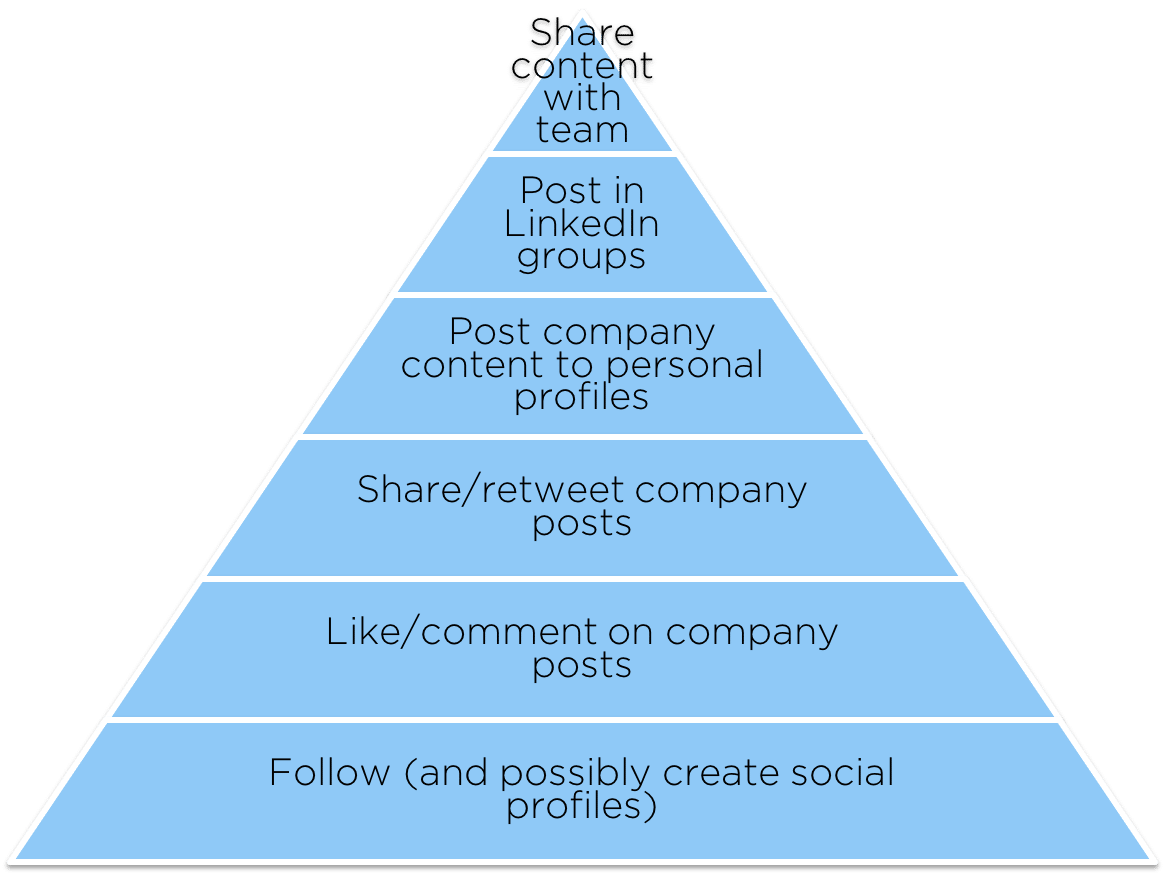Having a strategy around brand advocates is an important part of an effective marketing plan. Whether it’s online or by word of mouth, third-party validation can have a significant impact on a company’s bottom line. But what many companies overlook is that they have a potential network of advocates already in-house: their employees. In this post, we create a game plan for ways staff can get involved in social media marketing efforts and act as advocates.
Why involve staff?
The benefits to getting employees involved may not be immediately obvious but in short, they can have a big impact on a brand’s social media success.
Take, for instance, a company with 100 employees and 500 followers each on LinkedIn, Facebook and Twitter. According to Hootsuite’s reach calculator, with its existing followers the company has a maximum reach of 1,500. But if employees start posting that number jumps to 69,672, which is over a 4,500% increase.
Beyond generating awareness, employee posts are also seen as more relevant and trustworthy. Compared to a brand, industry research has found that their posts can get 8X more engagement, 25X more reshares, and 7X more conversions from social leads.
How can employees get engaged?

Hierarchy of Social Engagements
There are a number of ways employees can get involved. Typically, the easiest is to follow company profiles and to like posts. More impactful ways can be by posting to groups and sharing content.
Let’s dive in, starting with the easiest ways to get involved.
Follow
This is simple enough — have employees follow company profiles. If they aren’t on a particular social media platform, encourage them to create an account.
Like and comment
This is the easiest way for employees to actually engage with content and has a direct impact on the number of impressions a post gets. To explain, the more engagements a post receives, the more times a social platform serves it up in users’ feeds. This is because the platform will deem posts with a high number of engagements as more important.
Share and retweet
Another easy way to get involved is by sharing or retweeting a company post. The reason for this is that posts by the company will be seen by more than immediate followers of the brand. In short, this pushes company content to new audiences.
Post content
The next level up is employees creating their own posts. Employees could go about this two ways: 1) copy/paste a company post directly or 2) create custom posts from shared company content.
Industry groups
Industry groups on LinkedIn are valuable places for an employee to post about his or her company. The reason for this is that industry professionals and decision makers are already mingling and sharing information here. Employees should jump in by sharing insights, industry news or answering questions.
Contribute content
Companies are typically bustling with activity, with employees working on interesting projects, attending trade events and even going to company happy hours. With so much going on, encourage employees to share any interesting photos or other details. This will help push out more interesting content and show a brand’s human side.
Incentivize
Getting staff involved can be difficult. Unless they actually want to post, they may see it as additional work. That’s why it may be important to set up some sort of incentive program — like giving those who participate a chance at a giveaway. It may also motivate them to post content that is original and genuine.
If employees are unsure about what types of content they should post and where, have them read this guide on where to post B2B content.
With this social engagement plan, you can set a course with employees and tell them to make it so!


